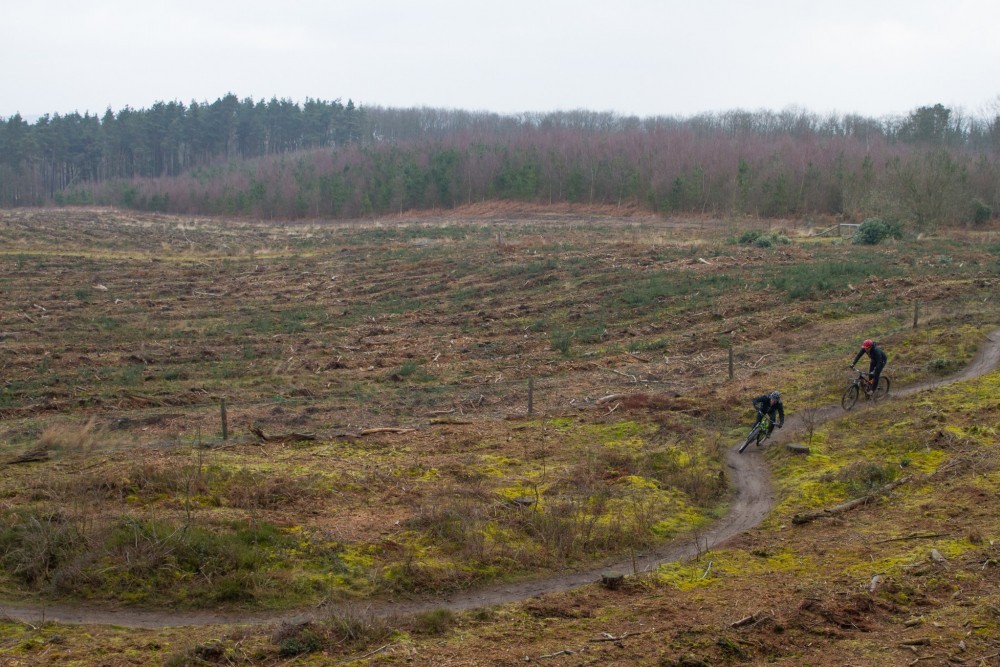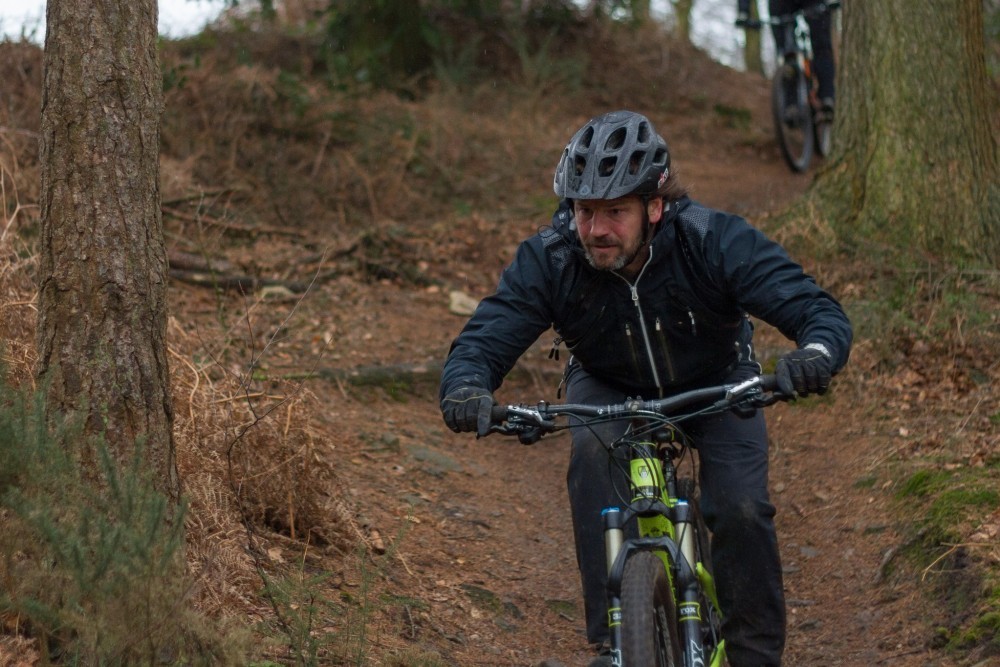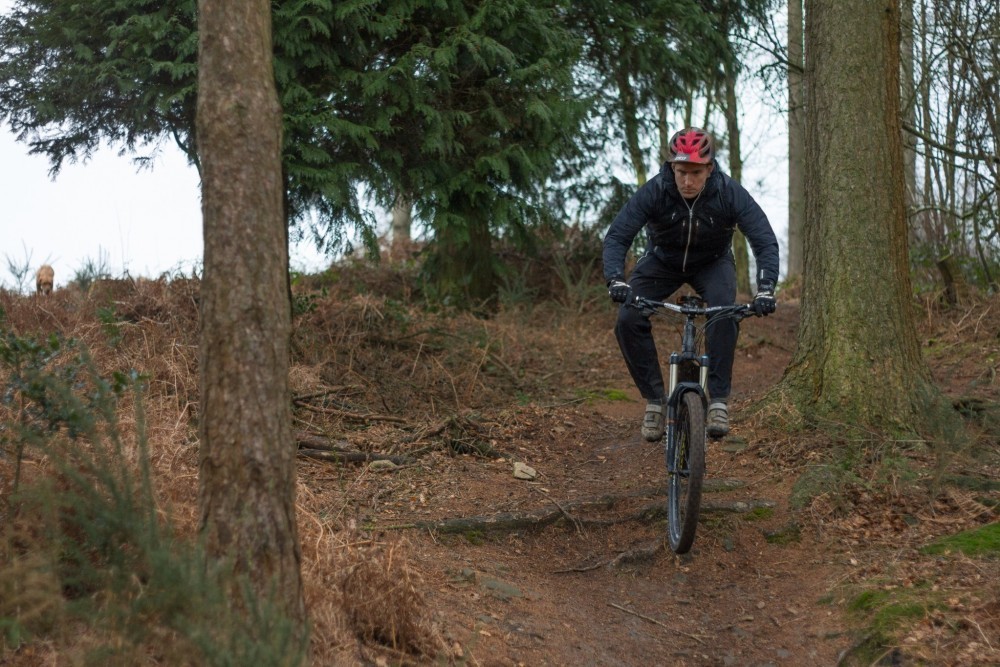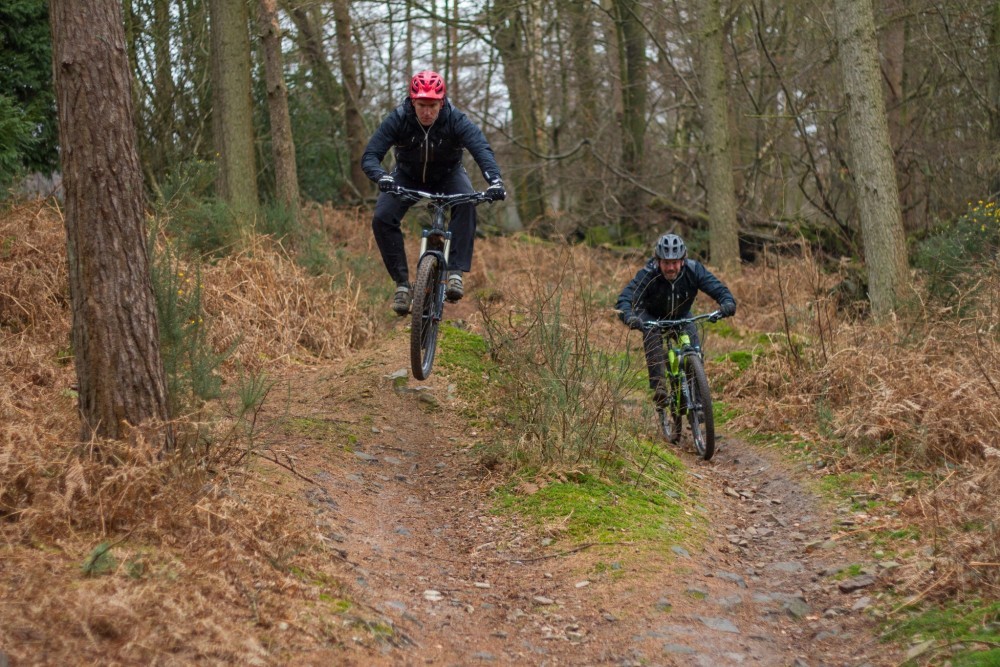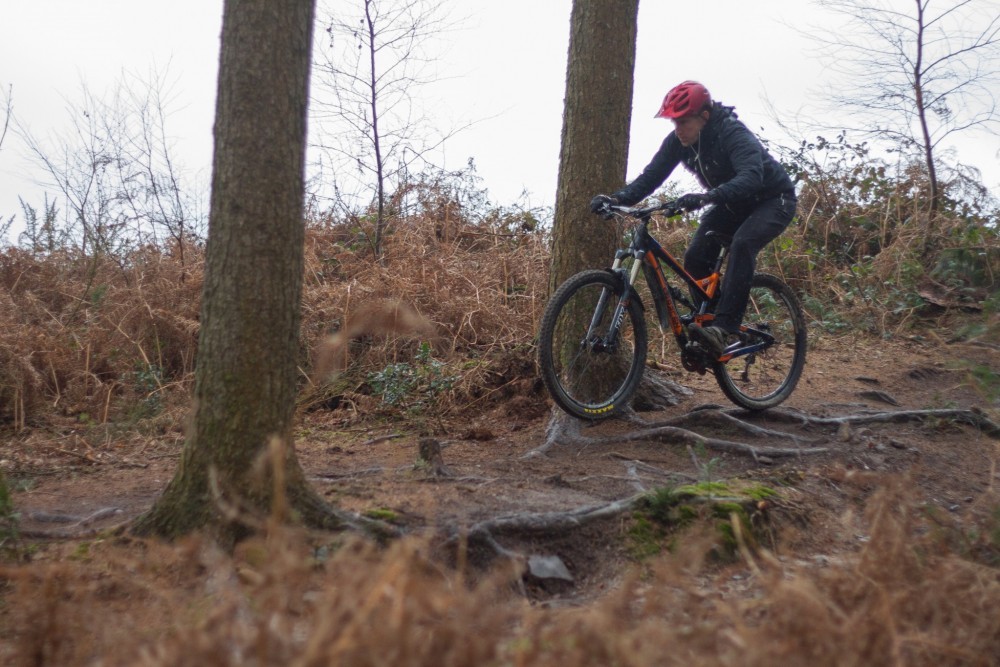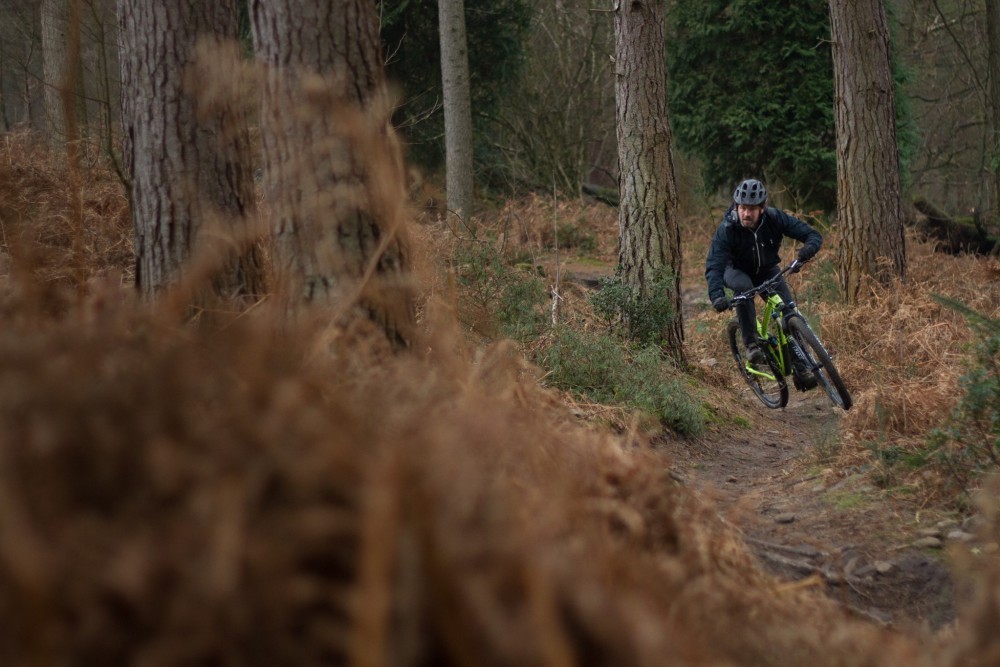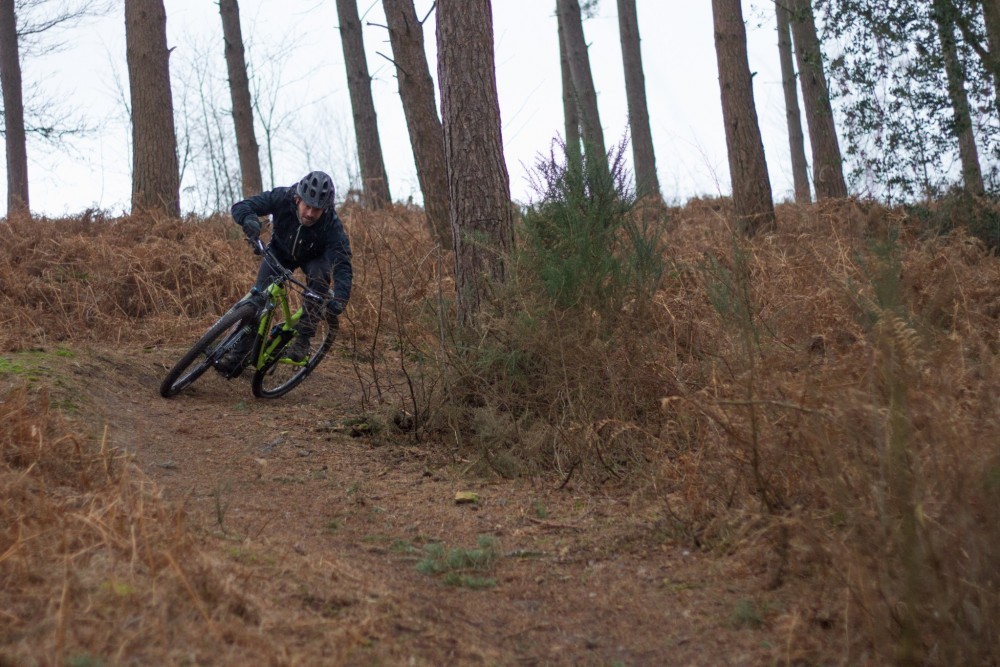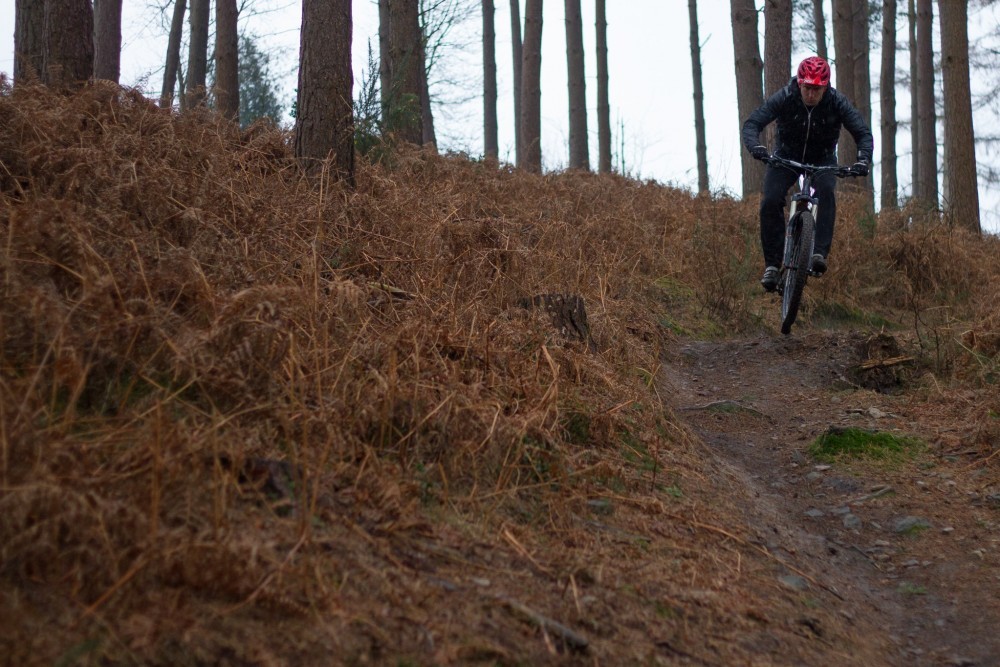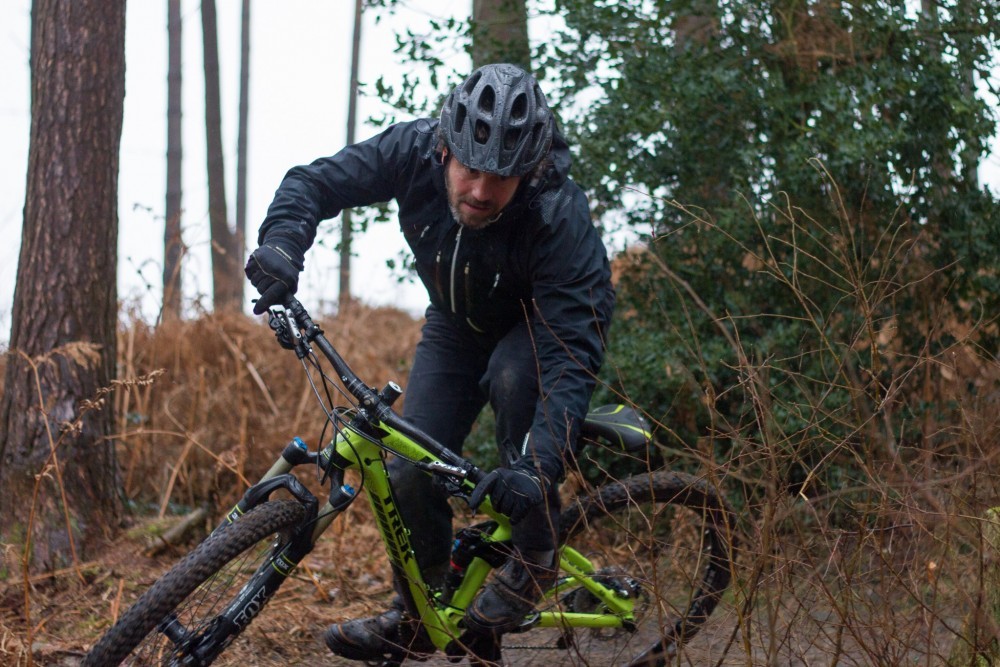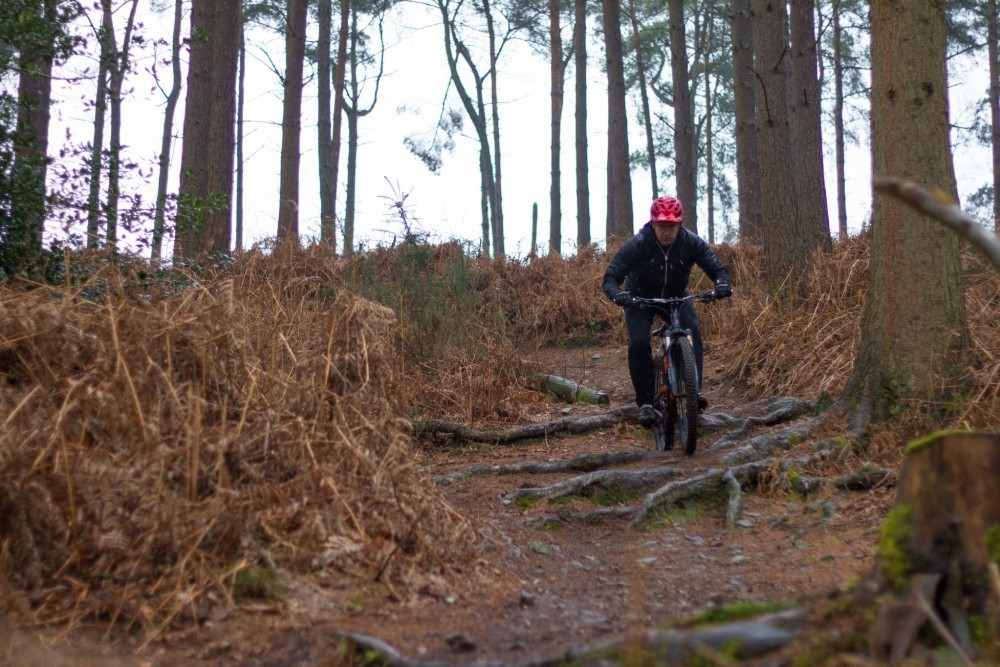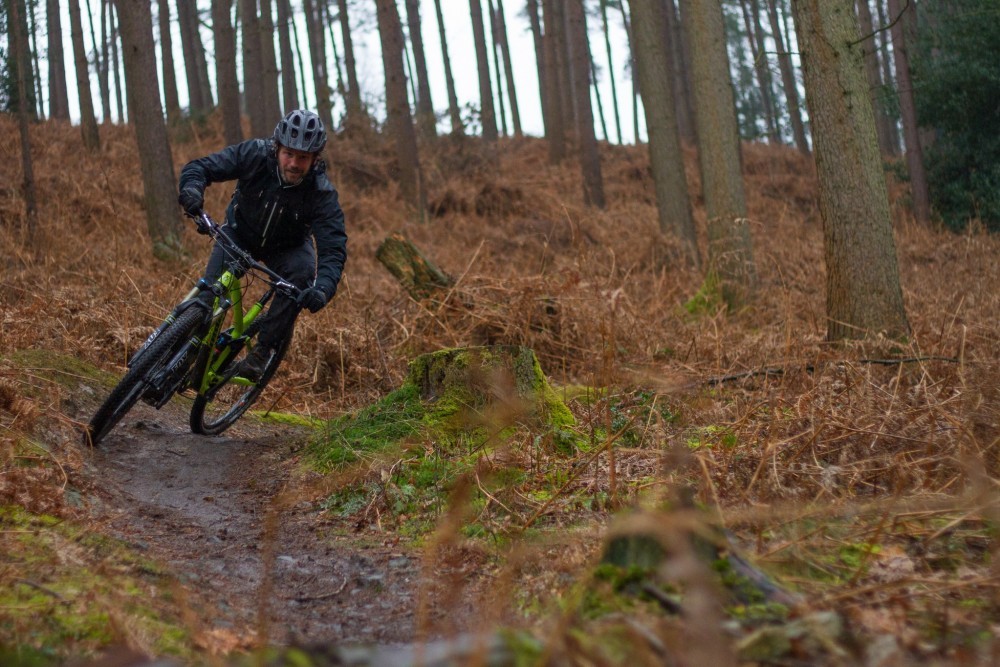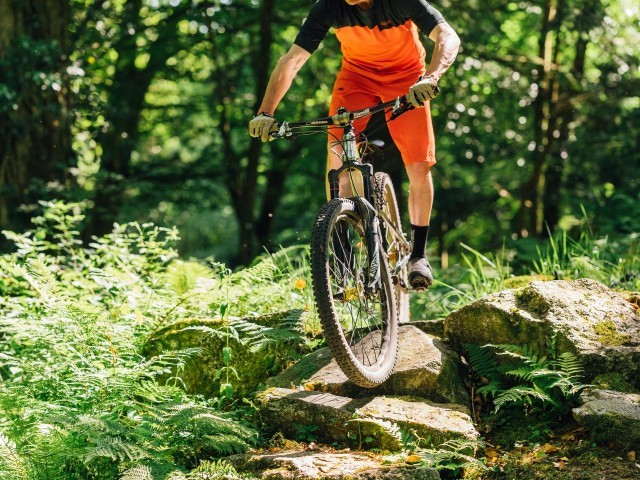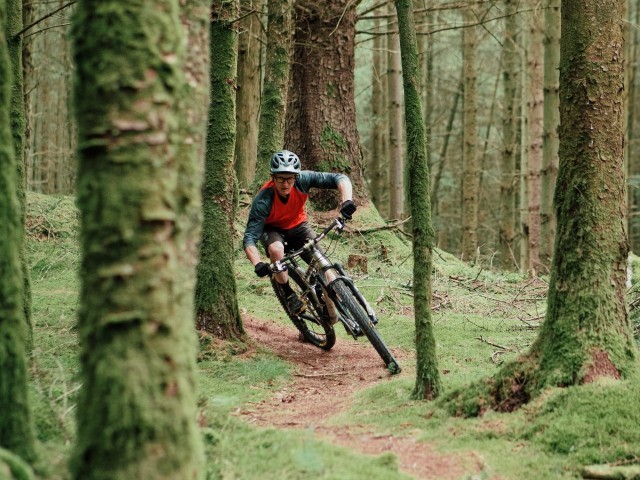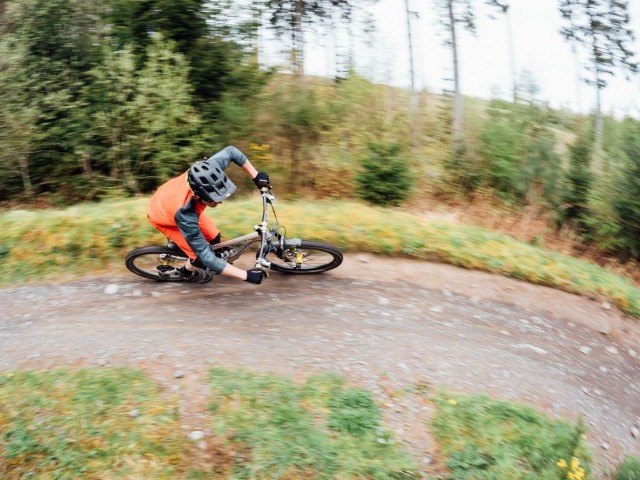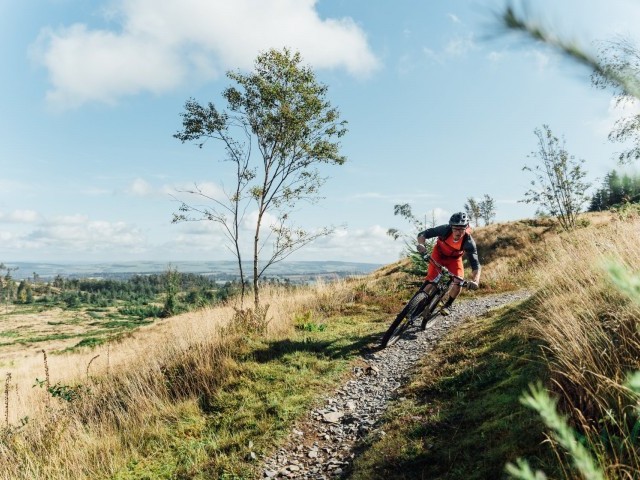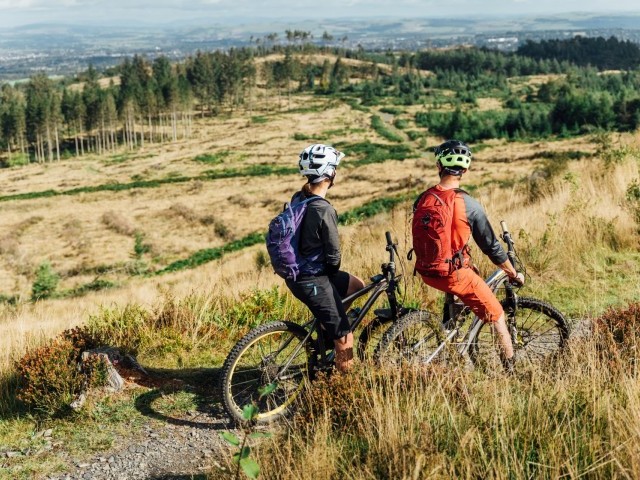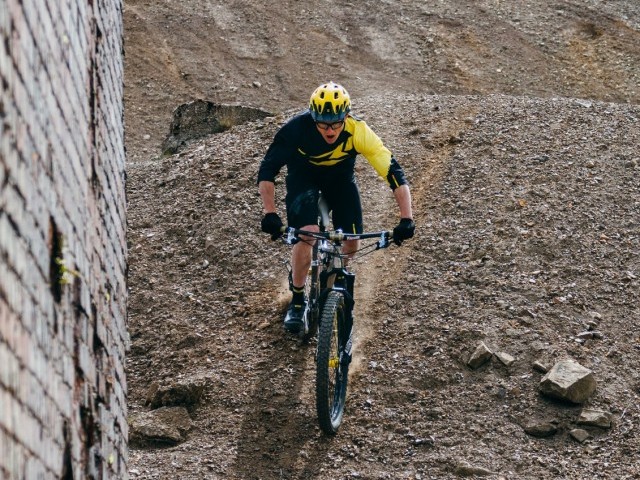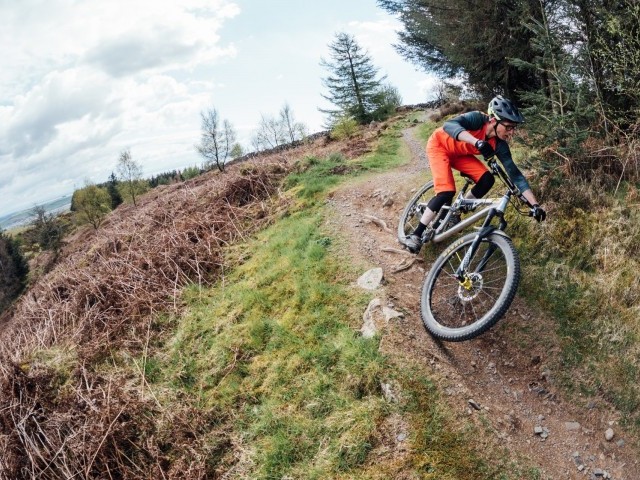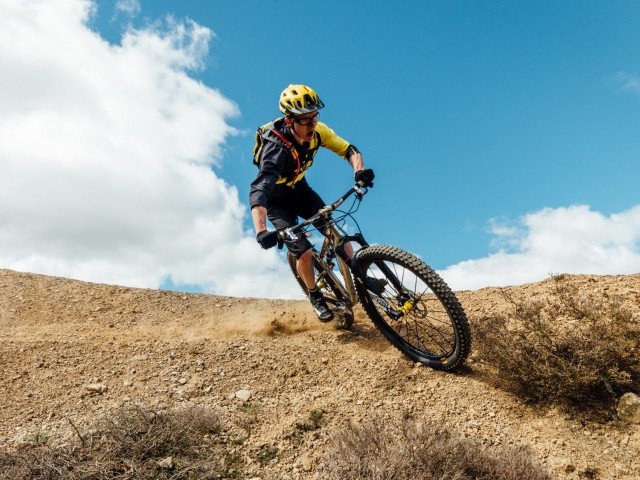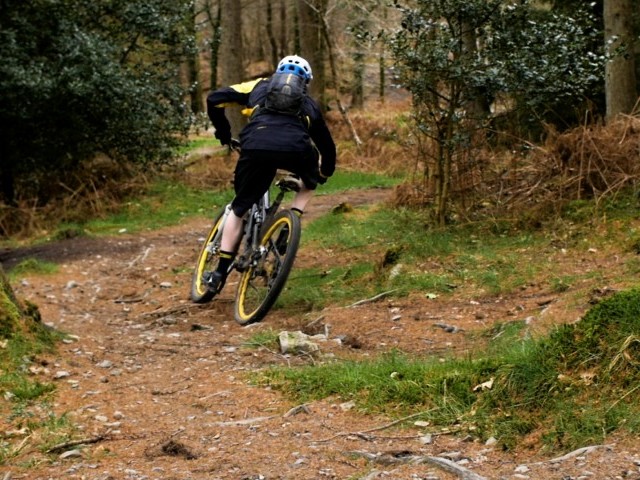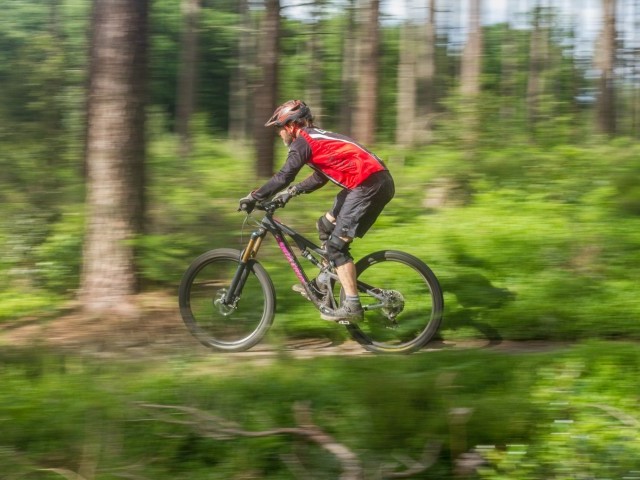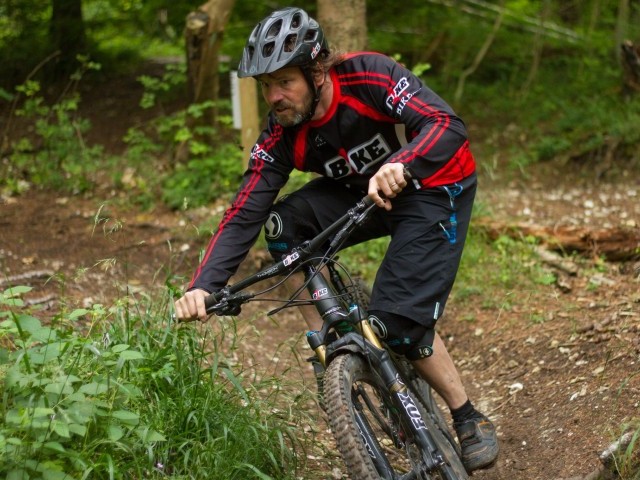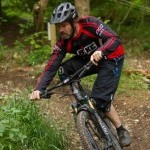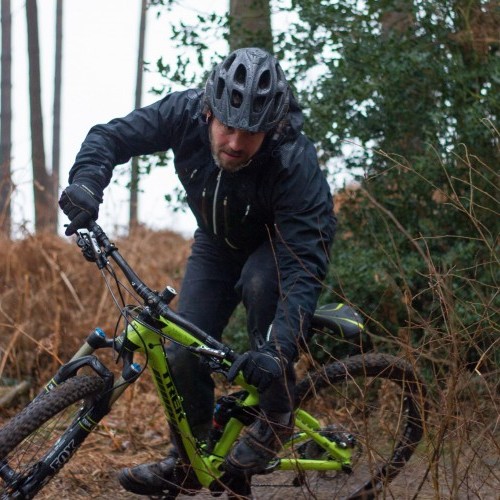
A More Professional Approach
Technique / Psychological
Introduction
Many of us dream of riding like a pro... or at least gaining just a small portion of the skills they posses!
As riders, we are all happy to benefit from the technical developments that help the top guys and girls in the pursuit of ever advancing standards when it comes to our bikes and equipment. The filter down effect is quite rapid and innovations seen appearing on the professional race scene and prototype bikes one year, will most probably be adorning bikes on a trail near you by the following season. This levels the playing field a little but, let's face it, there is more to being a great rider than a limitless bank balance. Looking like a pro at the trailhead is one thing, riding like a pro is quite another.
We have all looked at another rider's bike and felt the envy rise within from time to time. It passes, and we lose no sleep. Talent envy however, now that is a different matter. Talent envy can wake you up in the middle of the night in a cold sweat with a desire to get up, get out and get better. There is no online retail therapy that can cure 'talent envy' and make it go away. Even your local bike store, no matter how good their customer service is compared to the online virtual bike shops, wont stock the answer (but you can get vouchers from our website!).
The skills, finesse, fluidity and style that top riders employ so (seemingly) effortlessly, are not skills they are born with. They have worked hard to acquire them.
That is both good news for us as riders, and bad news. The good news is that if a top rider's skills are not simply an inherent talent they are born with, in theory, we can all work towards achieving a similar level of performance. The flip side however, is that it took a lot of time, effort, targeted training and many, many hours of hard work for the best to become that way. Time is the one resource we can’t buy, and for many of us our bodies have already reached a point that is somewhere south of prime. We could spend every waking hour in the gym, on the trail or with the wrong sort of doctor and still not even get close to the pros.
Should we shelve our dreams of becoming better riders and riding more like a pro? Curl up, roll over and get a road bike? No freaking way!
We may not be able to develop the physical prowess required to race word cups, but we can take other steps towards achieving a higher level of riding ability. It has never simply been a case of whoever can push out the most Watts wins (despite some national selection processes never fully getting their heads round this and arguably holding back many potential champs in favour of putting all their eggs in one or two baskets).
Just because we will never catch them up in terms of physical output, there are other areas where we can develop skills and talent to rival the very best; skills that are not only dependent on ripped muscles or a VO2 max on par with an Olympic rower, nor are they limited (too greatly) by the passage of time. There are other areas where we can improve our riding and benefit from techniques and understanding that play a massive part in the make up of the consummate professional.
In this issue we look at how our riding can benefit through developing the mindset and mental skills that combine with physical prowess and technical ability in creating champions. We might not have the physical strength and power of champions, but flexing the grey matter a bit more often is a skill we can all develop and a skill that will make a difference. How we think through the trail, our mental approach, and a more developed thought process can easily lead to smoother, faster and more efficient riding. There are many aspects to the often overlooked skills set, your mental game, which can be improved. Even when you are out riding your local trails with your mates, just for hits and giggles, your performance, satisfaction and overall ability can be improved by developing a more 'professional approach'.
In this, part 1, we will lift the lid on three techniques that are often the key to unlocking the talent within riders. At B1KE, our coaches work with all levels of rider from first-timers through to elite level athletes. While every rider has different needs and realistically different potential, all can benefit from, and adopt, a similar mental game. The processor that powers all of our riding can't be improved by pushing weights, cranking out climbs or injecting gorilla DNA. Yet it can be flexed, trained and developed. The more often we fire off messages from the brain, the faster the network operates. The body develops 'myelin' that effectively insulates the neurological pathways within our brain - the 'data' transfers more effectively and we can turn 'dial up' to 'broadband' without ever getting close to breaking a sweat. By repeatedly doing something the right way it becomes the norm. It becomes an unconscious ability, and hence we free up more of our brains processing power to deal with what is next or further ahead of us.
In short, it’s time to go mental!
We have touched upon all three of these three concepts in considering a variety of techniques, but by looking more closely and in a little more detail, we can start to fully unlock their positive potential on our pedaling (or pumping) prowess. This 'why to' understanding is the bond that can gel together your technical skill set and physical strength and fitness to give you the optimum output and make sure your talent and fitness are delivered with maximum efficiency and to maximum benefit
The Concentration Ladder
Man/woman in the state of nature is conditioned to think 'where am I and what am I doing'. In dealing with the fundamentals of existence this is a perfectly acceptable state of play. To get better, to evolve and develop we need to think in a different way. By solving problems and challenging the status quo, human kind has evolved. It requires a different thought process, a second rung on the ladder. "Where am I going and how am I going to get there?" is the second rung. Thinking ahead.
The further ahead we look and think, the faster we can go. The number of rungs on this ladder is effectively limitless. Beyond the “where am I going?” second rung are a series of rungs all asking the same question...“what is next?”. The further up this ladder you operate as a rider, the more time you buy yourself. The more relaxed your thought processes, the smoother, more pre-planned and ultimately more effective and appropriate your physical inputs will be. For sure there are going to be moments we are dumped back into the now, but continually striving to rise up the concentration ladder is hugely beneficial in creating optimum performance.
If you are riding a trail for the first time, with no prior knowledge of what is ahead, the limitations of this ladder will be restricted to your field of vision, how far ahead you can look, or perhaps more importantly, how far ahead you do look. 'Visual Performance Cues' may trick you into looking into the now. Look through them. The more technical the trail ahead, the more VPC's that stall your eyes, the more your thinking will be incremental rather than a seamless flow. If your eyes stall, then the likelihood is that your body will try and take control.
If the brain has come to a grinding halt on the trail, and the body catches it up, pretty soon it’s going to ask the brain for more input and if there is no response, flight and fight instincts will kick in. There are two outcomes. Point and hope (fight), or grab a handful of brake (flight). Both are likely to be accompanied by the physical 'freeze' instinct; breath holding, tensing up and curling up. In this state you are ill equipped to deal with the trails potential energy. Bouncing around with no real aim other than survival (or minimising the effect of the impact that is imminent). At this stage arguably you have not just slid down the ladder a bit but have fallen off the bottom rung.
No professional rider in a competitive event, in any discipline of MTB, simply hurls them self down a trail or heads off on lap one of a track without a good understanding of the sections and sectors that lie ahead. Even if they were to, because they have seen, felt and dealt with a wide range of features many times they can process information faster and more unconsciously and respond more rapidly to what lies ahead. The more their responses are automated the more bandwidth is available to quickly find solutions to the trail as it comes into sight.
Watch a pro rider performing at their best and it looks like they have all the time in the world. Below their waistline there might well be a whirlwind of activity, but rarely do their heads drop or bounce around. The focus always (or nearly always) is on what is next. There are few surprises for them in how the bike responds to given terrain or situations. They know where the bike might stall, where inputs will be great etc. and have already narrowed down potential outcomes within a given section and thus have already planned their own responses. Plan A might be interrupted, but plan B, C and D are already waiting in the wings. Clearly they will slip down a rung or two yet they rarely slump to the base of the ladder.
The key for us as mere mortals is in understanding how to deal with the second type of performance cue - 'input'. Good 'Energy Management' skills are key and these are directly related to our emotional state. Flight and fight responses will massively undermine your ability to deal with inputs correctly. Don't forget, no matter how much state of the art travel is at your disposal only you, the rider, can determine how effectively inputs are managed.
Flinching, tightening up and strangling the bike are the untrained responses to inputs. Relaxing, sinking into the 'pocket', pushing against stalling forces and inputs (or a combination of both) are the trained responses we need to develop. They will contribute to good energy management and keep your riding smooth. The further up the concentration ladder you operate the less likely inputs will catch you by surprise. We can't always avoid inputs, but we can effectively deal with them if we are prepared. The sooner we deal with them mentally the more quickly we can move on up the concentration ladder and the more smoothly we can progress down the trail.
The final performance cue that can affect a rider is that of performance cue 'waiting'. Even if you know a trail implicitly, are looking way ahead and operating way up the concentration ladder it is easy to only think to a certain point, not through it. In this instance prior knowledge can be as debilitating as having no knowledge. As a rider you will all know a trail that you love to ride but contains one or two elements that phase you each time. The likelihood being that the only thing you think as you enter that trail is to the point that has potential to upset.
It could be a steeper section, sizeable jump, off camber root or climb you have yet to clear. The problem lies in only thinking to that point and not through it. A pro rider looking to carry speed will always think through. Identifying the section, they will set the key physical elements as they approach the entry point - footwork, looking, body position and speed control will all be considered and measured by the entry point, allowing their brain to think through the section to what is next.
Try using a mantra of footwork, looking, and body position as you approach the entry to a troublesome section rather than the mantra of 'O.M.G!'. It is a far more positive approach. Knowing you have set up the physical elements to ride as best you can, you are ready for what lies ahead and can approach with greater confidence and more fluidity. It will reduce the potential for target fixation where all your focus is directed at the problem rather than the solution.
Visualisation
Few riders, outside of those performing at a high level, ever even consider the advantages that can be gained from correctly utilising a technique that is used by the best in many sports. From golf, F1, skiing, basically any number of other sports, it is a technique you can see competitors using with great frequency, yet at an amateur or enthusiast level it is often overlooked. Professionals often have a mind full of examples to draw upon.
The way they train using 'deep practise' means that reproducing a technique on match or race day is never doing something new but simply correctly performing something they understand from a variety of perspectives. Not only do they know how the technique feels, but also how it should look. Visualisation requires the rider to see the trail from the 1st person perspective and see their performance from the 3rd person. A top performer could describe a trail they are about to race with a level of detail way beyond that of the amateur.
Straight away this forward thinking and foresight will allow them to start making decisions before they even leave the start gate. Is it any wonder they appear so relatively calm when nothing is a surprise. The third person perspective is great for understanding and polishing technique. If a rider can play back in their own mind every aspect of a run without the need to watch a video of it, then they can identify which elements of their technique need work.
Understanding where every moment of time was gained or lost will give a rider a distinct advantage both in practise and performance. The better a riders first person perspective visualisation skills, the ability to know what’s coming before riding a section, the faster they can approach a section. There is less for the brain to do as images of what is to come are already formed in the brain - they are downloaded not uploaded, hence they are formed faster and require less of the brains bandwidth to create. All this helps a rider responded more correctly, more unconsciously, while all the time operating further from the edge of emotional control.
Maximal vs Optimal
A massively underrated but enormous step towards riding with the mindset of the pro is understanding; the importance of thinking about Optimal over Maximal. In short, try to ride too fast and you will end up ragged, try and ride as technically clean and perfectly as you can and you will end up fast. For sure, the end game is getting from start to finish as quickly as you can, but 'trying' to go fast and employing the skills that will make you fast are very different. Understanding where to apply power and where to conserve it is crucial. Standing up and mashing the pedals is not always the fastest approach. Going in too hot to a section and then being unable to deal with the inputs as a result can lead to sudden unplanned braking rather than accelerating through sections.
There is a massive difference between feeling fast and being fast. If you feel super fast it is more likely your brain is reaching a point of near overload - it feels fast because you are operating in the now, not in the next. Your brain is being filled with information at a rate that it cannot cope with. For many years mountain biking has been described as an adrenaline sport as if we should all ride in a state of panic or threat. I’ve no doubt that any pro standing at the start gate of Redbull Rampage is probably working hard to keep their emotions in check, but the adrenaline rushing through their bodies is not a planned response yet a primeval flight and fight response. Control is the key to performing at the highest level.
Using a corner as an example, the untrained mind might well approach with the overriding question in their mind "how fast can I get round this corner?" The more appropriate question is "what do I need to do to get round this corner fast?" The limit to your maximal lies in your ability to ride at optimal. The better your footwork, looking, body position and energy management skills, the more speed you can carry. Only going in thinking of maximum speed you can easily exceed the correct speed and end up off track, on the deck or breaking hard in the section.
Breaking down any section and thinking about the relevant skills and how, when and to what degree they need to be applied will help to achieve an optimal performance. The closer to optimal you ride, the higher your maximal.
Many times I heard the phrase "if you are not crashing you are not trying." Mainly these are words of comfort offered by their friends to someone who has crashed or more likely used by someone who crashes regularly and uses this mental approach as an excuse for their inability to keep rubber side down on a trail. The truth is that you can try really, really hard to address all the physical elements, try really hard to improve your performance and very rarely crash. If it was true that not crashing and not trying were directly connected, are Formula 1 drivers not trying?
Crashing isn’t usually the result of one little error but a combination of failings. Yes you might have a moment, land a bit heavy, drift a little in a corner, get pushed out of the pocket occasionally, but you still ride out of the section - albeit losing some time and slipping down the concentration ladder...but crashing regularly? Forget that.
Using the system allows and encourages a rider to work on optimal over focusing on maximal. If you want to improve your jumping maybe it’s energy management you need to focus on. In corners perhaps your footwork and looking. Identify the weak links in your riding, polish the elements that need the work and reintroduce them to the technique or the section. Simply flying into a section looking for speed will only teach you where your shortcomings lie and where your maximal currently is. Working on optimal will increase your maximal. Going fast does not make you a good rider, being a good rider makes you fast. Watching a pro master a trail, everything they do looks slowed down. They are operating so close to optimal that they never even need to get close to maximal in order to top the podium.
Taking on the mindset of champions in these three key areas will help you ride better for sure. Your ambitions may not be to top podiums, you might not define your ride by Strava rankings (good for you), but by looking at the trail and approaching it in a different way will help you ride with better style, flow and with a little more energy in your pocket for when you need it. Using a little grey matter will take some pressure off your body, ride faster and ultimately enjoy the trail and ride with a smile that is as wide as the trail is long. Enjoy.
This technique article was in Issue 34 of IMB.
Related
By Richard Kelly
Richard Kelly has been riding bikes since forever, and teaching people to become better mountain bikers for over a decade. He’s always out in the Surrey Hills training riders, building trails and riding for himself whenever he gets the chance. His unique perspective on mountain bike technique has earned him fans the world over, with some speculating he is actually Jamiroquai or perhaps Jack Sparrow…






